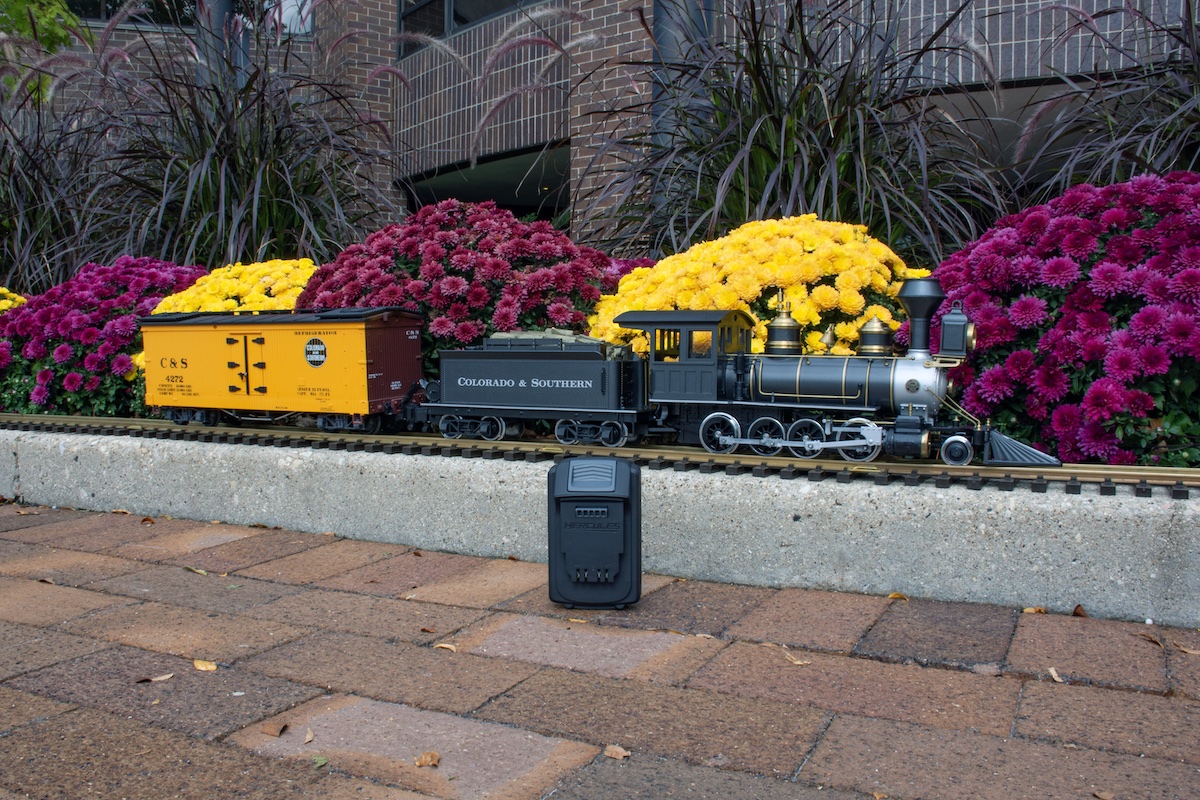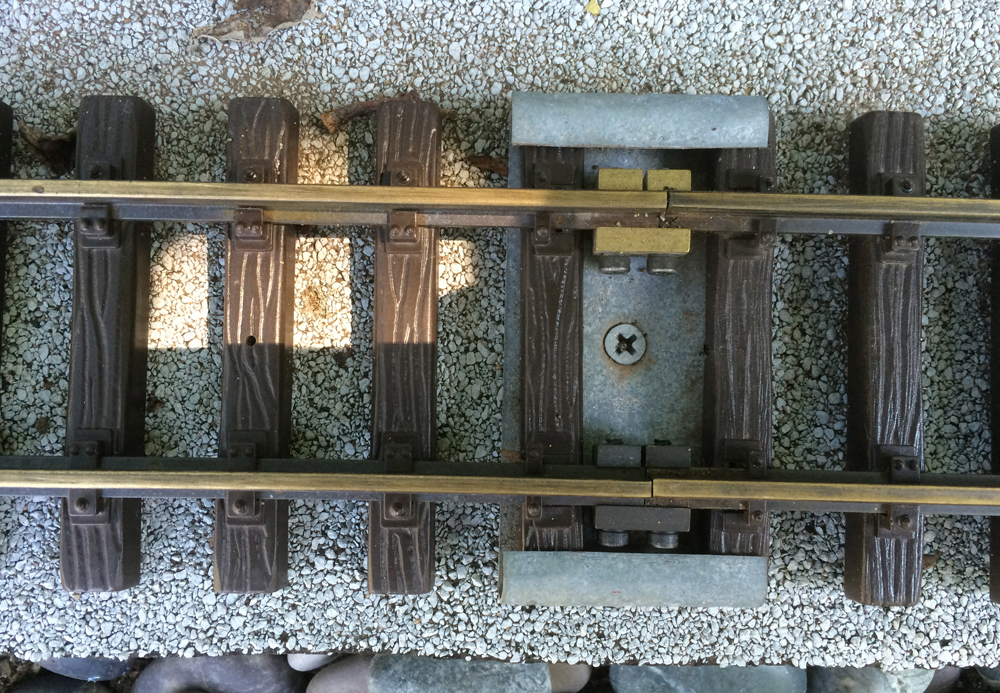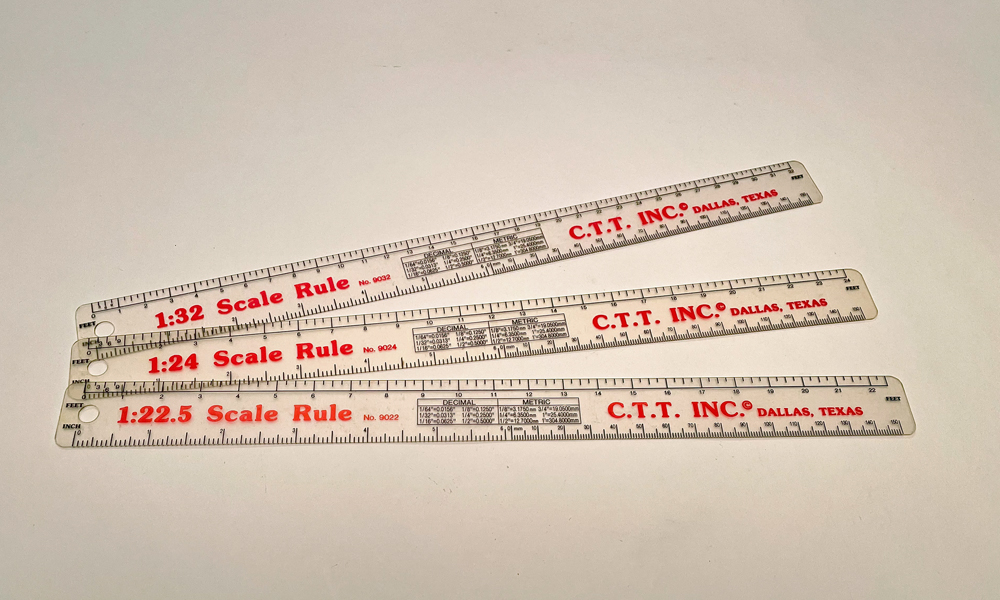Annual refers to a plant that lives for only one season and must be replanted each year.
Ballast is the medium, usually gravel of some sort, that provides a firm underlayment for track, helps to hold it in place, and drains water away from the ties.
Battery power is another way of operating electrically powered model trains. Batteries, usually nickel-cadmium (nicad) or gel cells, are carried onboard the locomotive or in a trailing car. Control of the train can be either via radio control (R/C) or by manual controls built into the locomotive.
Couplers are the devices by which cars and locomotives are hooked together. In the large scales, two types of coupler are most common. These are hook-and-loop, whereby every car and engine has a loop at either end. Spring-loaded hooks, which operate in conjunction with the loops, can be at one end only (known as polarized couplers) or at both ends. When cars are pushed together, the hooks automatically engage the loops. Polarized couplers are easier to uncouple, while cars with hooks at both ends are more reliable.
The other type of coupler is known as a “knuckle” coupler. These generally replicate full-size couplers as used on U.S. rolling stock. Not every knuckle couple available will mate with every other, for a variety of reasons.
Cut/cutting refers to the removal of earth, usually in a channel, to allow the laying of track in such a way as to not create unusually steep grades.
Crusher fines are crushed rock and rock dust, usually about 1/4″ in size on down. Crusher fines-also known as quarter minus, quarry fines, and other things-make excellent ballast for garden railways because the rock has “tooth” (as opposed to pea gravel, which is rounded), enabling it to lock in place and more securely hold track.
Dwarf conifer is a term that encompasses all of the genetically dwarfed trees that are commonly used on garden railways. Dwarf Alberta spruce is an example.
Fill is dirt or ruble that is used to bring the level of the ground up to a desired height.
Groundcover is plants that grow close to the ground and tend to spread. Small-leaved varieties are commonly used on garden railways to fill in bare patches of earth.
Ground throw is a machine that is used to move the point rails of a switch. It is built to a low profile, close to the ground, hence its name. An upright machine that does the same job is called a switch stand.
Gauge is the distance between the rails, as measured from the inside edges. Most large-scale trains in the US, regardless of scale, run on gauge-1 track (45mm between the rails).
Grade refers to the level of the ground or the ground surface upon which track is laid.
Kitbash means to take a commercial product and to modify it to suit your own needs. This product might have started out in kit form (hence the term), but it might also have been ready-to-run (R-T-R).
Live steam locomotives actually run on real steam. Their boilers contain water that is heated by a fire. The cylinders function in much the same way as a full-size locomotive’s. Live-steam engines are becoming increasingly popular with garden railroaders.
Main line is the primary track that defines the railway, that which connects the railway’s most important destinations. It does not include spurs, branch lines, yards, sidings, or passing tracks.
Maintenance-of-way refers to the maintaining of the right-of-way, or track. Maintenance-of-way stock encompasses a wide body of varied and interesting rolling stock and motive power.
Passing siding is a siding that joins the mainline at both ends. It is usually long enough that an entire train can pull into it so that another may pass in the opposite direction.
Perennial is a term that refers to a plant that will live through the winter and continue to grow the next, and following year, as opposed to an annual that must be replanted each year.
Point-to-point is a type of track plan whereby the train begins its journey at a dead end and ends it at another. The track does not form a continuous loop, nor are there turning or reverse loops at the ends.
Points can refer to an entire switch or turnout or to the actual rails that move within a switch to change the direction of the train, also called point rails.
Prototype is a word that we use to refer to the full-size object that a model is based on.
A rail bender is a mechanical device, usually consisting of three rollers (one of which is adjustable), that is usedto prebend rail to a specified radius before it is either handlaid or inserted into plastic tie strips.
A rail joiner is the device that holds rail ends together and in alignment. Commercial, sectional track comes with slide-on joiners. Clamp-on joiners are also available.
A retaining wall is a wall that holds earth in position. It is used where earth has been removed to make way for a structure or something else, or where earth has been built up for some purpose.












